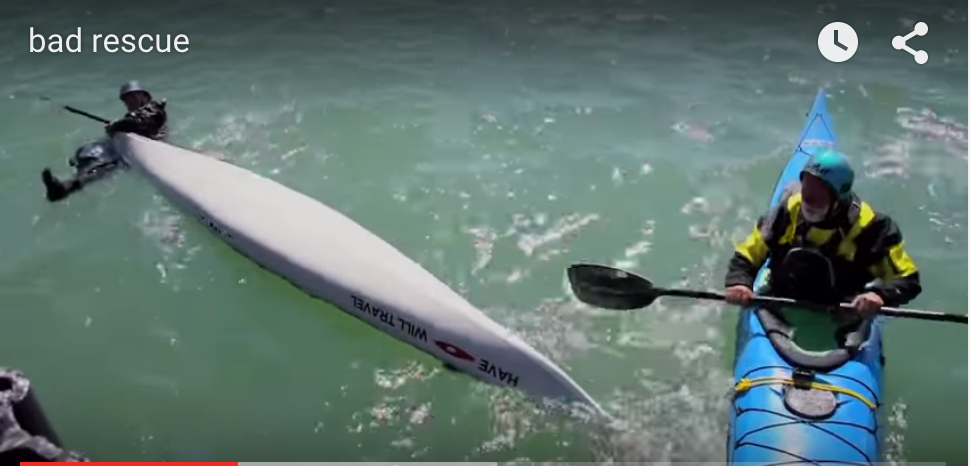Back in July, we spent some time with Scott Fairty and Trey Rouss of The Power of Water filming some assisted rescues.
When Scott wanted to film the “bad rescue,” we hesitated. Was it a good idea to show the wrong way to do something? Might it be yanked out of context and confuse someone?
But after Scott added a scrolling warning across the bottom, that seems unlikely. And it’s a great demonstration of the failures and dangers of a poorly executed T-rescue.
What’s wrong with this rescue?
1. The person in the water goes to the back of her boat and pushes down. This is unhelpful and dangerous; if she loses her grip on the boat, there is nothing the rescuer can do to recover her, and she risks being struck by the pointy end of her boat. It would be better if she were to turn her boat right-side up while waiting for the rescuer and position herself near her front hatch so that when the rescuer is near, she can hand off her boat and hold on to the rescuer’s decklines near his cockpit.
2. The rescuer lifts the boat by using his arms. This puts a strain on his body. It would be better if he were to edge away from the boat so that the raised edge of his own boat lifts the other boat and empties the water.
3. The person in the water swims boat to boat. Again, a swimmer can easily be lost. The person in the water should always hold on to something solid (perimeter deck lines, combing) on one boat or the other.
4. The person in the water holds on to the bow of the rescuer’s boat. The boat is bouncing up and down and can easily injure her. She should be near the rescuer’s cockpit.
In fact, it wasn’t easy to do so many things wrong. But it’s a good visual demonstration of the reasons why those choices are unsafe and inefficient.









I’d also add that the rescuer (me) is holding the cockpit of the swimmer’s boat which puts both my hands and gace at risk of damage from the swimmer’s feet as they re-enter the cockpit. It also means that I must let go of their boat while they put their skirt on. A better solution is to hold deck lines and fully commit with the upper body
Thanks, Scott!